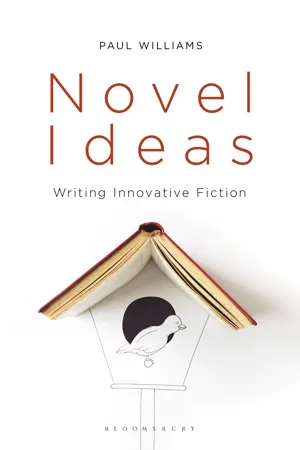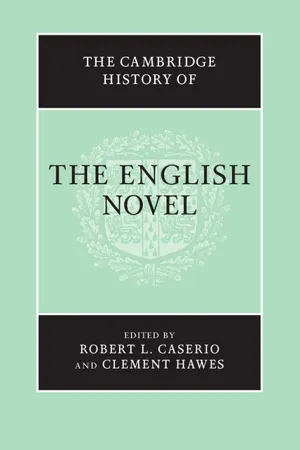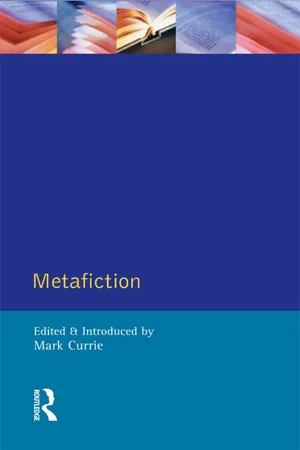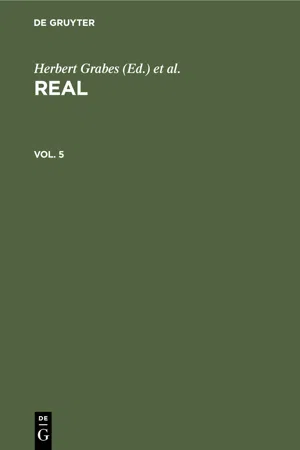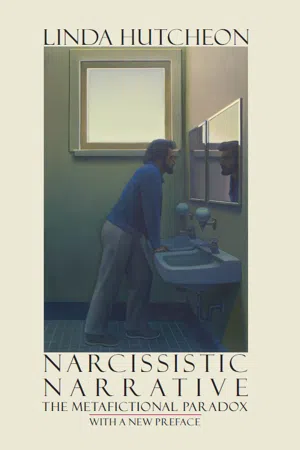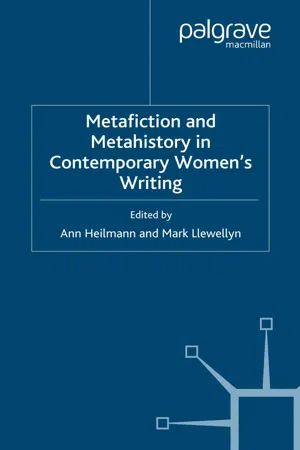Literature
Metafiction
Metafiction is a literary technique that draws attention to the artificiality of the narrative, often by breaking the fourth wall or self-consciously referencing its own status as a work of fiction. It blurs the line between fiction and reality, inviting readers to consider the nature of storytelling and the role of the author. Metafiction can be found in various literary genres and styles.
Written by Perlego with AI-assistance
Related key terms
1 of 5
10 Key excerpts on "Metafiction"
- eBook - PDF
Novel Ideas
Writing Innovative Fiction
- Paul Williams(Author)
- 2019(Publication Date)
- Bloomsbury Academic(Publisher)
Add ‘meta’ to any discipline and we get the study of what is behind or above that discipline. Metafiction is the awareness of how fiction works, a self-conscious look at its mediation through language of the world. Metafiction simply is ‘fiction about fiction’ (Hutcheon, 1980 , p. 1). The term was used for the first time in 1970 by the American novelist/critic William Gass in his essay ‘Fiction and the Figures of Life’. Gass described Metafiction as ‘fictional writing which self-consciously and systematically draws attention to its status as an artifact in order to pose questions about the relationship between fiction and reality’ (Waugh, 1984 , p. 2). ‘The Literature of Exhaustion’, a seminal 1967 essay by John Barth, tells us that literary realism is all ‘used up’ and ‘exhausted’ and we need smarter and more self-aware fiction, ‘novels which imitate the form of a novel, by an author who imitates the role of Author’ (Barth, 1967 , p. 79). Barth’s own fiction does just that: Lost in the Funhouse (1968) presents the reader with fictions that show off their fictionality and do not allow the reader to maintain a suspension of disbelief. In the title story, about a boy going to visit a funhouse, the narrator constantly interrupts the nar-rative with commentary on various narrative devices employed in the writing of the story: En route to Ocean City he sat in the back seat of the family car with his brother Peter, age fifteen, and Magda G____, age four-teen, a pretty girl and exquisite young lady, who lived not far from them on B_____ Street in the town of D____, Maryland. Initials, blanks, or both were often substituted for proper names in nineteenth-century fiction to enhance the illusion of reality. It is as if the author felt it necessary to delete the names for reasons of tact or legal liability. Interestingly, as with other aspects of realism it is an illusion that is being enhanced, by purely artificial means (Barth, 1988 , p. 72). - eBook - PDF
- Robert L. Caserio, Clement Hawes(Authors)
- 2012(Publication Date)
- Cambridge University Press(Publisher)
14 Extraordinary narrators: Metafiction and it-narratives mark blackwell The Oxford English Dictionary’s entry for the term “Metafiction” – “Fiction in which the author self-consciously alludes to the artificiality or literariness of a work by parodying or departing from novelistic conventions” – emphasizes the form’s dependence on established artistic norms and, through later invo- cations of naturalism and postmodernism, its short pedigree. Indeed, the best- known studies of Metafiction in English have focussed on works published during the last century or so. As a consequence, Metafiction is often construed as a relatively recent response to the shopworn conventions of realism. Patricia Waugh, for instance, has described Metafiction as deliberately countering the expectations established by traditional fiction through its “opposition . . . to the language of the realistic novel.” 1 However, the notion that metafictive play is the twentieth century’s cheeky challenge to the hegemony of the realist novel is complicated by numerous examples of Metafictional experimentation before the advent of “realist imperialism.” 2 Waugh admits that postmodernism’s “formal techniques seem often to have originated” from eighteenth-century predecessors (23–24), and Linda Hutcheon likewise acknowledges “the novel’s early self-consciousness.” 3 Nonetheless, both Waugh and Hutcheon concern themselves largely with twentieth-century works that respond to the nineteenth century’s “reification of . . . a temporally limited concept of ‘realism’ into a definition of the entire genre” (Hutcheon, Narcissistic Narrative, 94). Unfortunately, our standard definition of Metafiction, similarly reified and period bound, risks skewing our understanding of earlier Metafictional texts, and is unlikely to help us comprehend the relationship between experimental eighteenth-century narratives and the developing protocols of what Ian Watt called formal realism. - eBook - ePub
- Mark Currie(Author)
- 2014(Publication Date)
- Routledge(Publisher)
Metafiction explicitly lays bare the conventions of realism; it does not ignore or abandon them. Very often realistic conventions supply the ‘control’ in Metafictional texts, the norm of background against which the experimental strategies can foreground themselves. More obviously, of course, this allows for a stable level of readerly familiarity, without which the ensuing dislocations might be either totally meaningless or so outside the normal modes of literary or non-literary communication that they cannot be committed to memory (the problem, already discussed, of much contemporary ‘aleatory’ writing). Metafiction, then, does not abandon ‘the real world’ for the narcissistic pleasures of the imagination. What it does is to re-examine the conventions of realism in order to discover – through its own self-reflection – a fictional form that is culturally relevant and comprehensible to contemporary readers. In showing us how literary fiction creates its imaginary worlds, Metafiction helps us to understand how the reality we live day by day is similarly constructed, similarly ‘written’.‘Metafiction’ is thus an elastic term which covers a wide range of fictions. There are those novels at one end of the spectrum which take fictionality as a theme to be explored (and in this sense would include the ‘self-begetting novel’), as in the work of Iris Murdoch or Jerzy Kosinski, whose formal self-consciousness is limited. At the centre of this spectrum are those texts that manifest the symptoms of formal and ontological insecurity but allow their deconstructions to be finally recontextualized or ‘naturalized’ and given a total interpretation (which constitute, therefore, a ‘new realism’), as in the work of John Fowles or E.L. Doctorow. Finally, at the furthest extreme (which would include ‘fabulation’) can be placed those fictions that, in rejecting realism more thoroughly, posit the world as a fabrication of competing semiotic systems which never correspond to material conditions, as in the work of Gilbert Sorrentino, Raymond Federman or Christine Brooke-Rose. - eBook - PDF
- Herbert Grabes, H. J. Diller, Hans Bungert(Authors)
- 2020(Publication Date)
- De Gruyter(Publisher)
For it can only have a comparatively narrow reference to the mode of fiction it seeks to transcend by offering new techniques and/or subject-matter. Metafiction has not occurred as fre-quently and is not as narrowly referential. In its concentrated form, metafic-tion is a phenomenon of the twentieth century, where it finds its artistic, cul-tural and socio-economic contexts. 23 Metafiction, then, is a specific form of experimental fiction, as is, for example, the nouveau. roman, or as was the 'lyrical novel' when Virginia Woolf wrote The Waves to transcend the narra-tive practice of an Arnold Bennett. Metafiction belongs to a special category of 'ludic' or playful, fiction. Robert Detweiler, in his splendid article Games and Play in Modern Ameri-can Fiction, distinguishes three types of game-fiction which he relates to the three main features of game and play as discovered by theoreticians of the phenomena: mimesis, alea, and agon. Playing a game with an established symbol system produces the fictional mimesis, a work modelled upon histor-ical, typical, or conceivable life situations, such as Robert Coover's The Uni-versal Baseball Association, which focusses on a real game. Playing a game with one's own imagination produces the fictional alea, a work in which the author exercises his ingenuity by inventing intricate imaginary games, as in Brautigan's Trout Fishing in America. If the author plays a game with the read-er, if the work presents a contest between author and material, or text and 23 Cf. Imhof, Contemporary Metafiction, and Schabler, where these contexts are defined. Contemporary Metafiction 315 reader, the work, the composition of the work, and the reception of the work are a form of agon. Metafiction is a kind of alea-cutn-agon, with the principles of agon clearly dominating the exercising of the author's own ingenuity. - eBook - PDF
Narcissistic Narrative
The Metafictional Paradox
- Linda Hutcheon(Author)
- 2013(Publication Date)
- Wilfrid Laurier University Press(Publisher)
28 / Narcissistic Narrative: The Metafictional Paradox of the consequences of causal and temporal sequence. Metafiction, however, seems aware of the fact that it (like all fiction, of course) actually has no existence apart from that constituted by the inward act of reading which counterpoints the externalized act of writing. In the overt form of narcissism, several techniques are employed which are compatible with Ricardou ’ s “auto-représentation horizontale, référentielle, productrice” and also with the “auto-représentation verticale, ascendante, productrice”–that is to say, the use of mise en abyme, allegory, metaphor, microcosm to shift the focus from the “fiction” to the “narration” by either making the “narration into the very substance of the novel’s content, or by undermining the traditional coherence of the “fiction” itself, in the latter case. The distinction between the two modes of narcissism within this overt form is necessary at this stage. In the diegetic mode, the reader is made aware of the fact that he too, in reading, is actively creating a fictional universe. Often a parodied, backgrounded narrative code will guide his awareness of this fact. In The French Lieutenant ’ s Woman, for instance, Fowles's freedom-granting core plot involving Sarah and Charles is an allegory of the freedom granted the reader, the thematized reader, by another character, the narrator. John Barth ’ s whole novel, The Floating Opera, is a macro-structure of his hero ’ s use of “Adam’s Original and Unparalleled ‘Ocean-Going’ Floating Opera ” as a correlative for his own storytelling processes. Todd Andrews imagines too the viewers watching parts of a continuous play as this boat drifts along the river, and having to fill in the parts they miss with the aid of their own imaginations. This image of the experience of both living life and reading texts is further mirrored in the ironic mise en abyme of Todd’s futile attempts at boat-building and also “Inquiry” writing. - eBook - PDF
Playing with Picturebooks
Postmodernism and the Postmodernesque
- C. Allan(Author)
- 2012(Publication Date)
- Palgrave Macmillan(Publisher)
27 1 Looking Beneath the Surface Different codes and layers of meaning below the surface of a classic realist text are on open display in a postmodern text, which exhibit the fact that it is not natural, finished and seamless but rather is constructed, open, fragmented and plural. (Travis, 1998, p. 47) One of the major characteristics of postmodern literature is its chal- lenge to realist fiction. The challenge is two-fold: to the ideologies embedded within realist texts and to the apparent ‘naturalness’ of the various narrative strategies. The major concern of this chapter is to examine these challenges by considering how various narrative processes that are often ‘below the surface’, as Travis phrases it, are made overt in postmodern picturebooks. As the discussion demon- strates, this overtness is achieved largely through the employment of a range of metafictive strategies which, as Hutcheon (1988) notes, self-consciously comment on their own narrative and linguistic char- acteristics. This self-reflexivity is a dominant subject of postmodern fiction, and is also a defining feature of Metafiction. As Waugh (1984) notes, Metafiction refers to self-reflexive fiction which intention- ally draws attention to its status as fiction and, in so doing, poses questions about the relationship between fiction and the reality it purports to represent. In the first section of this chapter, I discuss metafictive strategies drawing on a number of postmodern picture- books to illustrate their use. The second section examines several picturebooks in more detail, illustrating further how these strategies 28 Playing with Picturebooks are incorporated into texts to offer different points of view and mul- tiple ‘truths’. Metafictional strategies foreground the ways in which meaning is constructed, highlight the texts’ own processes of production and reception, and disrupt the codes and conventions of ‘realist’ fiction. - eBook - PDF
The Postmodern Fairytale
Folkloric Intertexts in Contemporary Fiction
- Kevin Paul Smith(Author)
- 2007(Publication Date)
- Palgrave Macmillan(Publisher)
We have seen above that the novels under analysis here all raise questions about the domain of historiography, from the problems of autobiographical writing to the representation of historic events, and the difficulties raised by this trope have forced us to reconsider our prejudices about literary realism, omniscient narration, history and autobiography. Hutcheon claims that Midnight’s Children, Nights at the Circus and Waterland are all prime examples of histori- ographic Metafiction because of the way they question historiography and counter history as a ‘grand narrative’ with history on the human scale. One of the primary ways that these texts question historiography’s status as a grand narrative, separate from fiction, is by incorporating a storyteller, alerting readers to the constructs that determine how we read a text: the construct of the author, the split subject of author and narrator, the effacement of the individualised subject and subjectivity caused by omniscient narration, the genre of fiction and the idea of representation. Metafictive Intertextuality 117 Cazzato, in his analysis of Metafiction, argues that contemporary Metafiction is the product of postmodern or late capitalist society. By foregrounding the author, texts that Cazzato classes as ‘hard’ metafic- tion act to reinscribe the narrating subject. He suggests that Roland Barthes, in his famous essay ‘The Death of the Author’, had ‘fallen into the trap of reification’, and that Metafiction acts to try and remind the reader of the originating subject: by applying a Marxian reading we can see that the story-as-commodity produces the same sense of alienation as any other reified product, it appears to have just magically ‘appeared’ to the reader, who has no sense of who the author really is, or why they write. - A. Heilmann, M. Llewellyn(Authors)
- 2007(Publication Date)
- Palgrave Macmillan(Publisher)
Introduction Ann Heilmann and Mark Llewellyn In the last decades of the twentieth century and into the new millennium, historical fiction, particularly that written by women authors, has been transformed from an essentially escapist form of literature with a predominant interest in the romantic into a genre at the cutting edge of postmodern conceptualizations of the past and of contemporary worlds. Writers like Margaret Atwood, A. S. Byatt, Angela Carter, Tracy Chevalier, Eva Figes, Daphne Marlatt, Michèle Roberts, Rose Tremain, Sarah Waters, Jeanette Winterson and others have rein- vested history’s role in literature and literature’s place in history with a new importance. This book examines the dynamic experimentation within historical fiction by contemporary women authors from North America, Australia and the UK. Ranging from the popular to the literary, the fictional to the factual, and covering those narratives that defy categorization, the chapters assembled here represent new and varied approaches to the subject of how contemporary women fiction writers use and reconfigure history in their work. We have designated the texts under discussion in this volume as ‘Metafictions’ and ‘metahistories’. Metafiction, for our purposes, is best defined by the following statement by Patricia Waugh: Metafictional novels tend to be constructed on the principle of a fundamental and sustained opposition: the construction of a fictional illusion (as in traditional realism) and the laying bare of that illu- sion to create a fiction and to make a statement about the creation of that fiction. The two processes are held together in a formal tension which breaks down the distinctions between ‘creation’ and ‘criticism’ and merges them into the concepts of ‘interpretation’ and ‘deconstruction’. 1 1 2 Introduction In the case of this book, the ‘formal tension’ Waugh indicates is provided at an additional level by the other term in our title: the ‘metahistorical’.- eBook - PDF
- S. Keen(Author)
- 2003(Publication Date)
- Palgrave Macmillan(Publisher)
6 Alternatively, examining the complexity of some fictional worlds can be an intriguing subject. The manipulation of narrative level, discussed in the previous chapter, can account for the presence of stories within stories through the presence of more than one teller who narrates an additional layer of story. Another set of alternatives, represented by the world-making of fantasy fiction, dream visions, postmodern historio- graphic Metafictions, and other varieties of romance, occurs when narrative deploys fictional worlds that contain other worlds within them. 7 When a single narrator carries the reader over the ontological boundaries marking the differences between these story realms, as in Neil Gaiman’s Neverwhere Fictional Worlds and Fictionality 123 (1996), then a complication of fictional worlds which cannot be explained by the language for narrative levels has occurred. Some formal issues that have often attracted the attention of critics inter- ested in fictionality and fictional worlds include the examination of front matter and what Genette calls paratexts; the role of naming in establishing the existence of characters within fictional worlds, or in characterizing the worlds themselves; the use of settings and representations of places and spaces in fictional worlds; and the relationship between settings and plot functions, following Vladimir Propp on plot functions and Mikhail Bakhtin on the chronotope. Recently, Franco Moretti has called for the practice of ‘distant reading’ of fictional worlds, using methods of analysis that result in the creation of maps, trees, and graphs of fictional worlds and the texts in which they are contained. Moretti is most interested in the mainstream realistic texts of the European tradition, although his call to use maps as a method of reaching new kinds of literary understandings can be extended well beyond that field. - eBook - PDF
How to Make Believe
The Fictional Truths of the Representational Arts
- J. Alexander Bareis, Lene Nordrum, J. Alexander Bareis, Lene Nordrum(Authors)
- 2015(Publication Date)
- De Gruyter(Publisher)
Appreciation usually involves participa-tion, but this is not always the case. According to Walton (1990, 275), especially the participation of the kind “being caught up in a story” is discouraged for instance by works “declaring or displaying their fictionality”. In Walton’s own words: One obvious way in which works sometimes discourage participation is by prominently declaring or displaying their fictionality, betraying their own pretense […] We are not like-ly to imagine very vividly that we are being told truths about actual events, when we read a story, if (and while) it forces on our attention the fact that it is just a story, that it is in-tended as a prop for games of make-believe rather than a report of actual events, that what it says is not true. (Walton 1990, 275) So how exactly can fictionality be prominently declared or displayed? There can be several ways to achieve that, of course, to be found for instance in postmo-dern fiction, especially of the self-reflexive kind. Indeed, as noticed by Marie-Laure Ryan, postmodern ‘high literature’ has become almost contemptuous of the so-called immersivity of popular literature, inherited from the nineteenth-century novel. Today’s ‘high literature’, according to Ryan (2001, 160), “dares to Metalepsis and Participation in Games of Make-Believe | 207 use such modes [that is modes encouraging participation and immersion], only under the protection of scare quotes and ironic distance”. Or, as Jean Ricardou stated already in 1967 about the French nouveau roman, a novel today is not the writing of an adventure any longer, but the adventure of writing. 4 Postmodern writers thus prefer to exhibit the fictitiousness of their creations and to concen-trate on the writing process. Most scholars tend to take the link between self-reflexivity and high art for granted, in the same way as they accept the link between immersion and popu-lar culture today. Such dichotomies lead to different paradigms of values.
Index pages curate the most relevant extracts from our library of academic textbooks. They’ve been created using an in-house natural language model (NLM), each adding context and meaning to key research topics.
